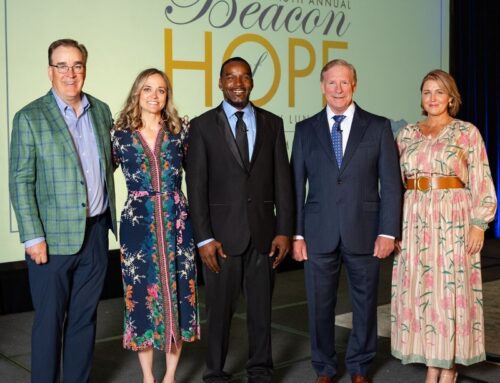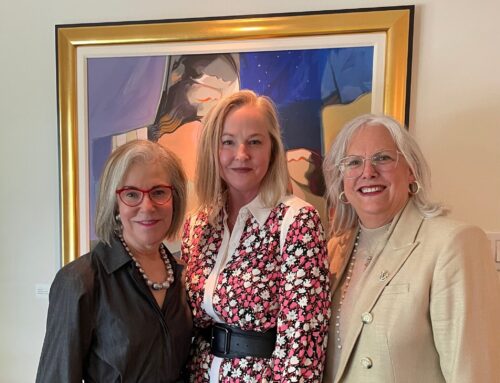‘Zen Archery, Photography and the Art of Letting Go’
By Danny Fulgencio
Archery was one of those things I’d always wanted to photograph but never had the chance. As luck would have it, I was asked to photograph archers for our August 2012 issue. But the luck stopped there.
When a photo assignment comes down the pike, I typically research the subject and previsualize the shot I’m after—sometimes I’ll sketch it out—and if circumstances permit, I hone my efforts with obsessive tenacity on that shot. This can be dangerous.
In photographing archers for the magazine, the photo in mind would look like this: a horizontal shot, the camera slightly ahead and left of the archer, extreme concentration flashing in her eyes; the focus: the arrowhead: suspended in stunning detail with a glint of light snapping off its tip; the arrow: sleek and deliberate, frozen mid-air—all this shot at the precise moment the arrow has left its master’s clutch.
That was the idea anyway.
I’d previously drawn correlations between the Zen of archery and photography. Both demand intense timing, precision and accuracy to deliver the desired result. Moreover, the image I was after would be a meta-study conjoining archery and photography, one practice rooted in preservation, the other, destruction. The Yin. The Yang. It would be a glorious photograph.
Again, that was the idea.
At the Texas Archery Academy range, I made friends with two young archers, Robyn Pope and Chris Dion. They were great sports—and great shots. I watched them shoot, studying their form and how it might translate into pixels. Then I heard myself say something like, “Maybe you could help me with this idea I have for a cool archery photograph.”
I dialed in a couple lights, made some test photos and went after The Vision. And that’s when the problems started. The trouble with actualizing a creative vision is that it often comes with logistical annoyances like, say, reality.
First, lighting. With insufficient ambient light to work with at the indoor archery range, I resorted to off-camera flash units, and without going into too much detail about high-speed shutter sync, I was limited to a somewhat sluggish shutter speed of 1/250th of a second when a cheetah-like 1/8000th of a second would have been ideal.
Second, timing. As you might imagine, photographing an arrow in flight isn’t easy. A launched arrow travels at around 300 fps, which is just over 200 mph, which is really, really fast and requires any combination of luck, legendary hand-eye coordination or precision equipment.
If you’ve ever seen a photo of a bullet flying through an apple or an airborne dart just as it punctures a water balloon, there’s a good chance these high-speed photos were made using a sound or laser-activated shutter mechanism. I had no such rig, but would only need to channel a few creative vibes into the universe… or so I thought.
With my archers at the ready, Robyn or Chris would rattle off a salvo while I stood nearby trying to nail the shot. At first, each failed exposure was no big deal—just warming up—but as the minutes ticked by my hopes for Zen clarity dwindled into futility.
If I could see the arrow leaving the bow I knew I didn’t make the photograph. After all, as momentary as it may be, when the camera’s shutter snaps closed, it’s what the photographer doesn’t see that makes the photograph.
So we tried the shot over and over and every time I came up short, doubt crept in a little further, and every time I was more forcefully reminded that I was working on deadline: The magazine needed photos.
Perhaps the same can’t be said of arrows, but I’m now reminded of the English writer Douglas Adams, “I love deadlines. I love the whooshing sound they make as they go by.”
With certain failure becoming a certain reality, we hit the final snag: A friendly but assertive range officer came over to inform me that trying to make a totally rad archery photo was not a strong enough argument for being downrange of whizzing arrows. I know photographers who have put themselves at greater peril, but fair enough.
It was at this point that making The Shot was pretty much nixed. It’s a sad realization that I’d felt before—and since. The pang of failure never deadens entirely.
So where was the Zen? Where was my Flow in rendering the decisive moment? Where was my photo-monk-Henri-Cartier-Bresson-split-second genius? As Susan Sontag notes, “Cartier-Bresson has likened himself to a Zen archer, who must become the target so as to be able to hit it; ‘thinking should be done beforehand and afterwards,’ he says, ‘never while actually taking a photograph.’”
Yeah, well, that sounds pretty and all, but being the target wasn’t working out very well for me. And maybe that’s where the principle fault lines lie: Too much thinking when pushing the shutter and not enough planning beforehand… It was the photographic equivalent of failing to articulate a clever phrase when needed. L’esprit de l’escalier.
And then I had a moment, perhaps more a concession than an epiphany, but still, a moment: Once released, the arrow follows its own path, meaning archery is less about the arrow’s destiny than the archer’s graceful release. And if the success of a photograph, like that of an arrow’s flight, is measured by its impact, the result is ultimately born from the practitioner’s ability to let go. And, conceptually, maybe there comes a point when it’s best to let an immature idea miss its mark, accept the reality and simply let it go.
And so I did exactly that: I let go. I chose instead to focus my camera on the archer’s release, that moment just before the grip loosens and the arrow heads toward its destiny.
In the end, one of the photos from that shoot made the cover of all five of our publications. The portraits of Robyn and Chris can speak for themselves. While these photos were likely viewed by most our readers in a literal context, for me they’re reminders of several hard-learned lessons, not the least of which being able to just let go.









